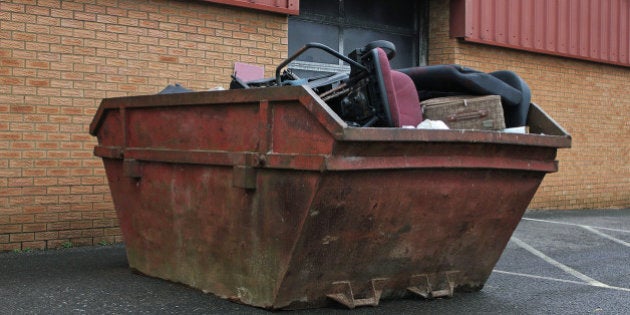
In the U.S. alone, over 17 billion pounds of office furniture and equipment is sent to landfill every year. This waste is typically a result of necessary changes like moving, branch closures or revitalization projects. The furniture needs to be removed or replaced but it is what's being done with the furniture or, "F", waste that is the problem. It is actually a significant problem since the materials should not be going to landfill in the first place.
A typical desk chair is made of dozens of different materials and chemicals and a complete cubicle can produce between 300 - 700 pounds of waste. Since most furniture and equipment is also made of wood, metal and plastic and has a long lifetime, the products can be effectively repurposed. These materials are also considered scarce resources and hazardous if not disposed of properly, meaning recycling or repurposing should be the first option.
As a whole, Canadians like to recycle. According to a recent GfK Roper Green Gauge Global survey, Canadian consumers rank first in recycling out of 25 countries surveyed. However, the habit of recycling household goods has not translated to business waste. Due to increased options, recycling at home has become relatively easy and awareness about how to do it and why is high. A similar approach to office waste needs to be applied -- business leaders and executives need to be educated on the scope of the problem and provided with easy and cost effective solutions to address it.
Electronic, or E-waste, is a great example of how this can be achieved for business. Similar to F-waste, the process was originally complicated and businesses were not aware of their options or how big the problem actually was. Due to an increase in public awareness and education, people and businesses are now adopting better solutions. Many organizations, including the Government of Canada, have even implemented targets to reduce E-waste.
The other thing that E and F-waste have in common is that the materials are really not waste at all and can often be repurposed for community/charitable organizations or resale. This idea feeds into the "circular economy", which aims to reduce waste and pollution by creating products that can be reused, recycled or repaired. The concept has the potential to reshape how things are made, used and reused -- it is also becoming popular in places like the UK but Canada has some work to do.
Currently, Canada does not track how much F-waste is being sent to the landfill and this makes understanding the scope of the problem and the potential economic, environmental and social opportunities extremely difficult to identify. A 2014 study from McKinsey & Co, estimated that the circular economy could add $2.6 trillion to the European economy by 2030, potentially boosting GDP by 3.9 per cent. As the circular economy catches on in other parts of the world, there is no reason that Canada cannot benefit but business and policy leaders need to make this type of thinking common place.
General Motors is a great example -- the company is reducing the amount of furniture and equipment waste from an office revitalization project by working with the rePurpose Program, a partnership between Herman Miller and Green Standards. The rePurpose Program provides a sustainable, cost-effective approach to managing surplus office furniture, equipment, supplies and materials.
The partnership is projected to divert 2,000 tons of furniture and equipment from the landfill through a combination of resale, recycling and donation channels, and create an estimated $1 million worth of in-kind donation to 100 non-profit organizations. This furthers GM's landfill-free goals while complementing its ongoing community investment activities.
What GM did differently was incorporate a plan for its existing furniture and equipment into its broader renovations at three main offices in east Michigan. As its renovations unfold, GM and its partners have a process in place for understanding its inventories, engaging buyers, non-profits, and recyclers, and reporting on the outcome. F-waste will be virtually eliminated from the process.
Although GM is a major multi-national business, this is an example that can be replicated throughout businesses of any size. Business need to set F-waste reduction goals, include the time for repurposing into their transition plans and share their successes to increase awareness.
Follow HuffPost Canada Blogs on Facebook
Also on HuffPost: